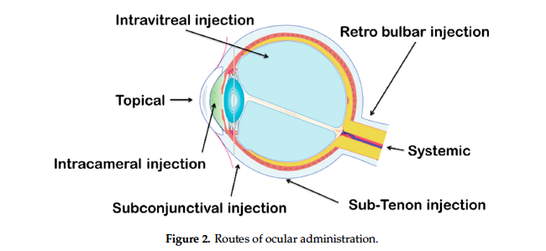- Home
- Blog
- News
- Basics
- Sources
- Agencies, Regulatory & Organisations
- CERSI Excipients Browser
- Excipient Report
- Excipient DMF List
- EXCiPACT Certified Companies
- Excipient Documentation
- Excipient EINECS Numbers
- Excipient E-Numbers
- FDA Inactive Ingredient List
- FDA GRAS Substances (SCOGS) Database
- IPEC Americas
- USP - U.S. Pharmacopeia
- Definitions
- Whitepapers / Publications
- Supplier
- Services
- Media
- Events
- 1st pharmaexcipients Poster Award
- Event Calendar
- Events featured by pharma-excipients
- 4th Annual Formulation & Drug Delivery Congress
- DDF Summit
- ExcipientFest Americas
- ExcipientFest Asia
- Global CompliancePanel
- International Conference and Exhibition on Pharmaceutics & Novel Drug Delivery Systems
- Formulation & Drug Delivery USA Congress
- Laboratory Medicine 2018
- Making Pharmaceuticals Europe
- Making Pharmaceuticals Exhibition
- Pharma Integrates
- PharmaExcipients China @CPhI China
- TTC Technology Training Center
- Jobs
- Online Sourcing
- Contact
26. January 2018
The last fifty years, ophthalmic drug delivery research has made much progress,
challenging scientists about the advantages and limitations of this drug delivery approach. Topical eye
drops are the most commonly used formulation in ocular drug delivery. Despite the good tolerance
for patients, this topical administration is only focus on the anterior ocular diseases and had a high
precorneal loss of drugs due to the tears production and ocular barriers. Antibiotics are popularly
used in solution
07. December 2017
Pharmaceutical approaches based on nanotechnologies and the development of eye drops composed of the mucoadhesive polymers chitosan and hyaluronic acid are emerging strategies for the efficient treatment of ocular diseases. These innovative nanoparticulate systems aim to increase drugs’ bioavailability at the ocular surface.
03. October 2017
Components of the ocular surface synergistically contribute to maintaining and protecting a smooth refractive layer to facilitate the optimal transmission of light. At the air–water interface, the tear film lipid layer (TFLL), a mixture of lipids and proteins, plays a key role in tear surface tension and is important for the physiological hydration of the ocular surface and for ocular homeostasis. Alterations in tear fluid rheology, differences in lipid composition, or downregulation of...
21. March 2017
By Lutz Franzen and Florian Unger; Formulation Development, Bayer Pharma AG 1. General Overview On 20th and 21st of June 2016 the International Association for Pharmaceutical Technology (APV) hosted a “high-toned seminar” on ocular drug delivery. At the venue in Berlin an audience from academic and industrial research listened to a comprehensive mix of overview talks and case studies. In the following article we give a brief introduction to the topic of ocular drug delivery and summarize...
20. March 2017
Abstract Local ocular delivery of cyclosporine A (CsA) is the preferred method for CsA delivery as a treatment for ocular inflammatory diseases such as uveitis, corneal healing, vernal keratoconjunctivitis and dry eye disease. However, due to the large molecular weight and hydrophobic nature of CsA and the natural protective mechanisms of the eye, achieving therapeutic levels of CsA in ocular tissues can be difficult. This review gives a comprehensive overview of the current products available...
08. November 2016
ABSTRACT Topical administration is the most common method to deliver ocular therapeutics. However, the eye is highly resistant to foreign substances and its clearance mechanisms effectively remove drug, significantly limiting the efficiency of common topical formulations. In the search for improved ocular bioavailability, particle based delivery systems have arisen as a promising strategy to overcome these limitations while retaining the patient friendly aspects of topical formulations....
06. November 2016
Abstract The eye is a distinctive organ with protective anatomy and physiology. Several pharmacokinetics compartment models of ocular drug delivery have been developed for describing the absorption, distribution, and elimination of ocular drugs in the eye. Determining pharmacokinetics parameters in ocular tissues is a major challenge because of the complex anatomy and dynamic physiological barrier of the eye. In this review, pharmacokinetics of these compartments exploring different drugs,...
30. August 2016
Abstract In situ -gelling systems has the great potential in the wide areas of drug delivery. The application areas of such systems are broad and these systems can be formulated not only as gels but also as in situ gelling nanospheres, microspheres and liposomes. To overcome the drawbacks associated with conventional drug delivery systems and take advantages of both solutions and gels, such as accurate dosing, ease of administration of the former and longer precorneal residence of the latter, a...
25. July 2016
Purpose In ocular drug development, an early estimate of drug behavior before any in vivo experiments is important. The pharmacokinetics (PK) and bioavailability depend not only on active compound and excipients but also on physicochemical properties of the ocular drug formulation. We propose to utilize PK modelling to predict how drug and formulational properties affect drug bioavailability and pharmacokinetics. Methods A physiologically relevant PK model based on the rabbit eye was built to...
10. July 2016
A cationic nanocrystal formulation containing dexamethasone acetate nanocrystals (0.05%) and polymyxin B (0.10%) for ophthalmic application was produced using a self-developed small scale method for wet bead milling. The formulation developed offers the advantage of increased saturation solubility of the drug (due to the nano-size of the crystals), increased residence time in the eye (due to small size and increased mucoadhesion by the cationic charge) resulting ultimately in potential...


